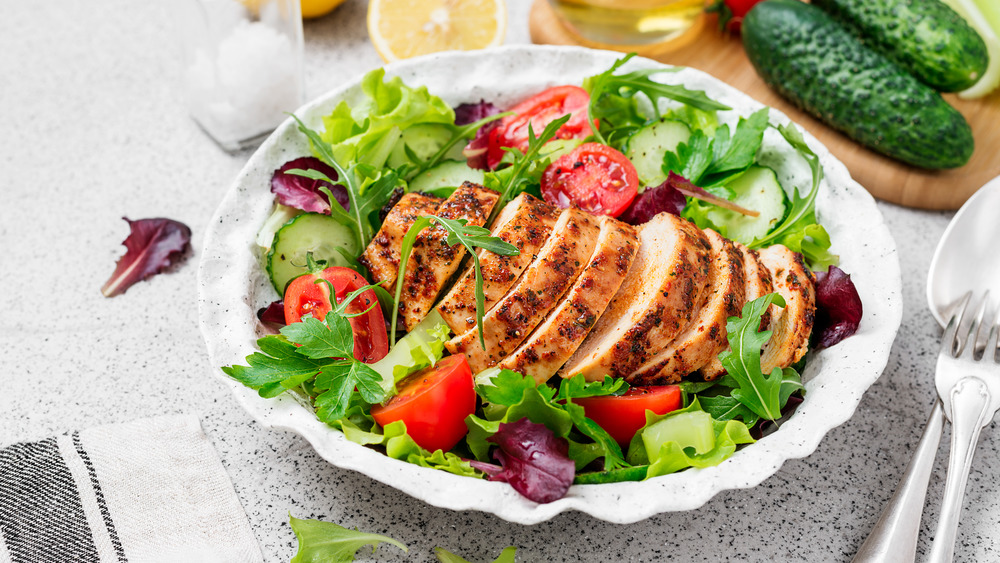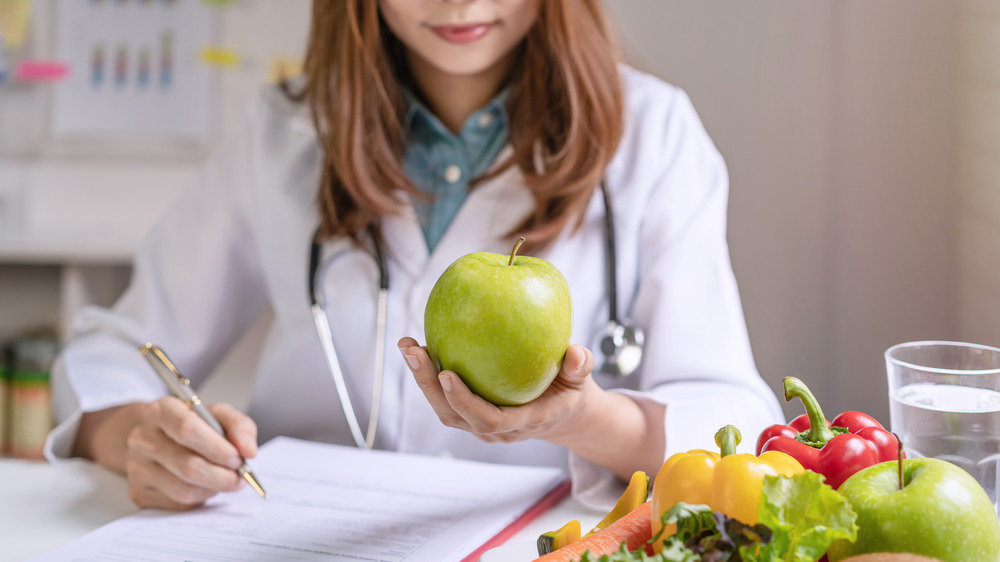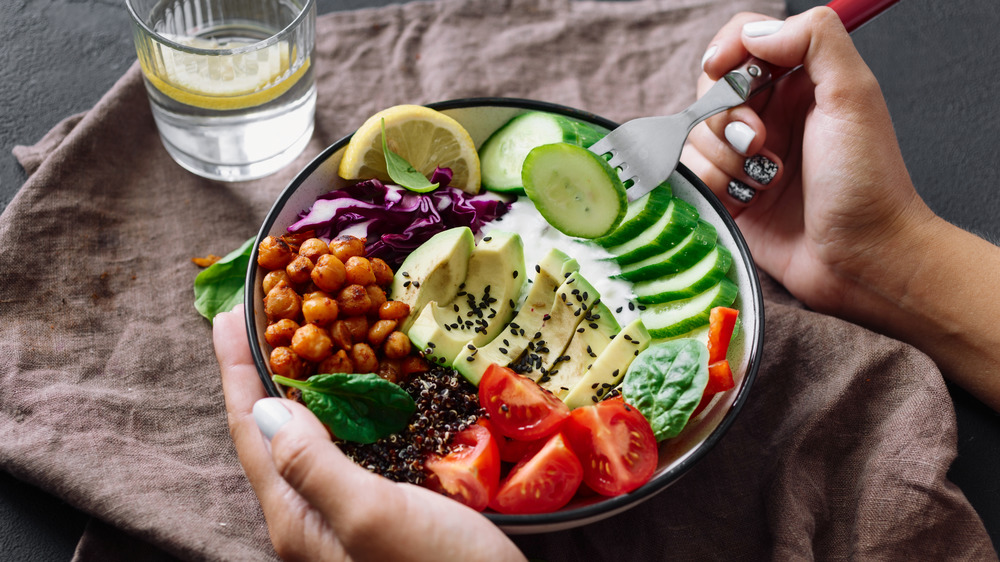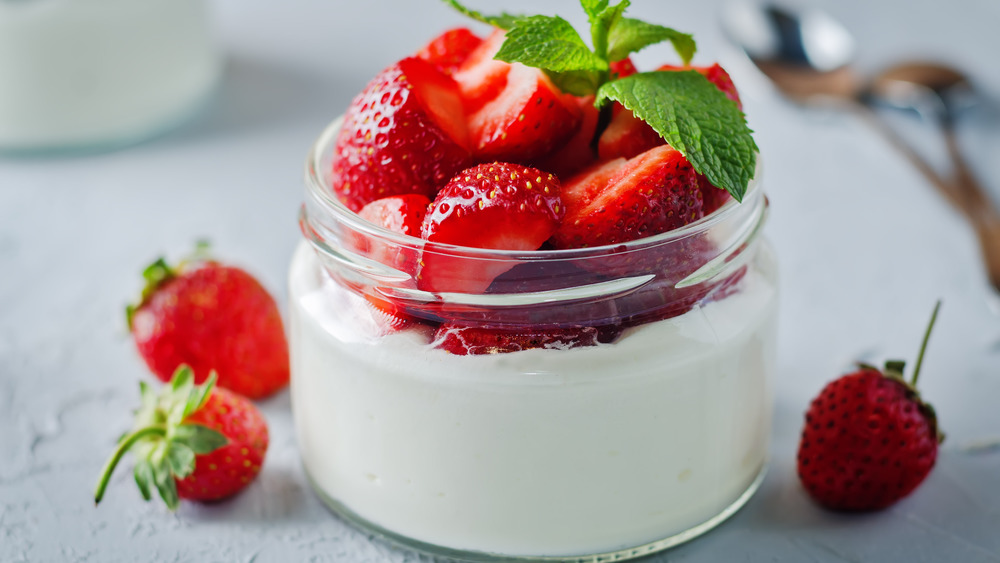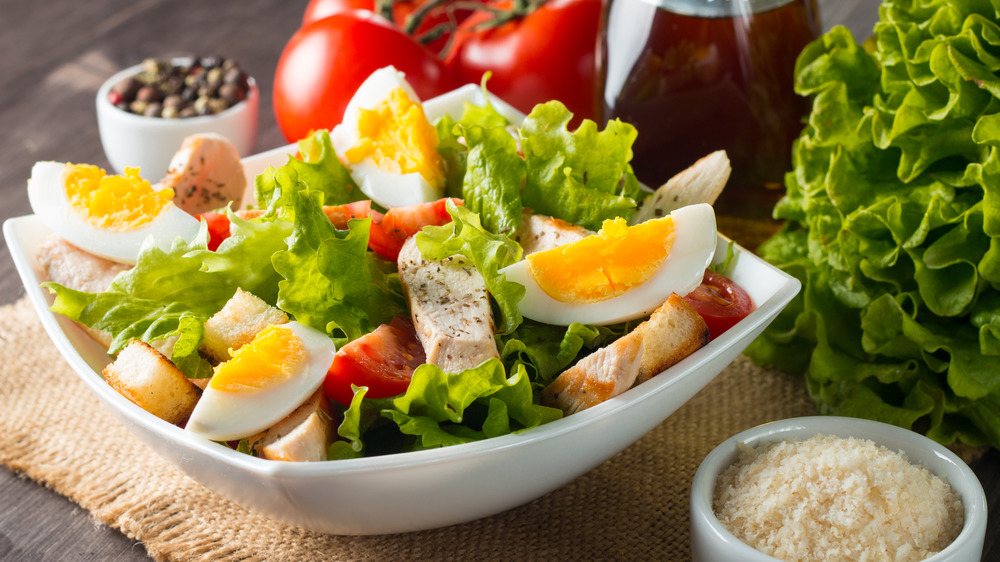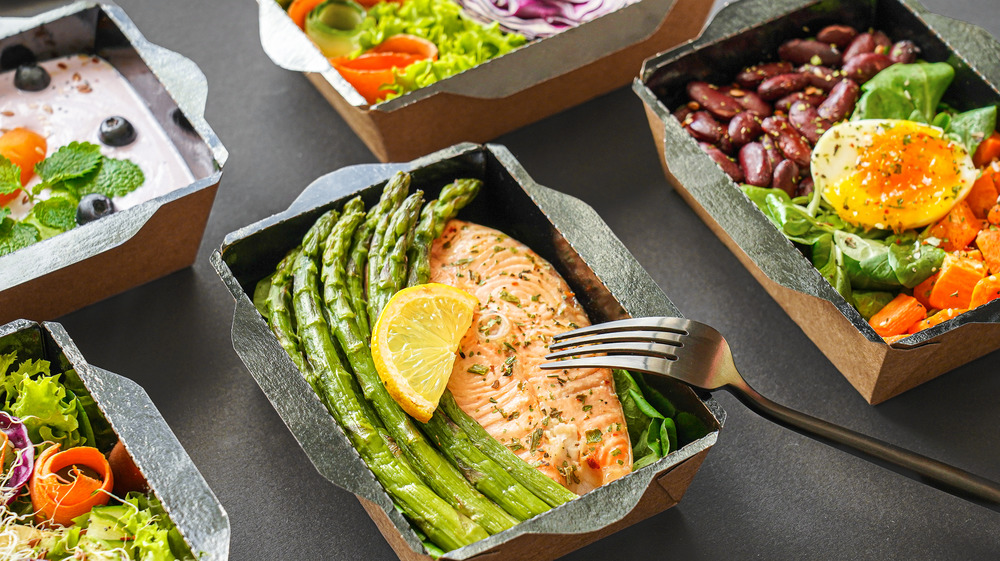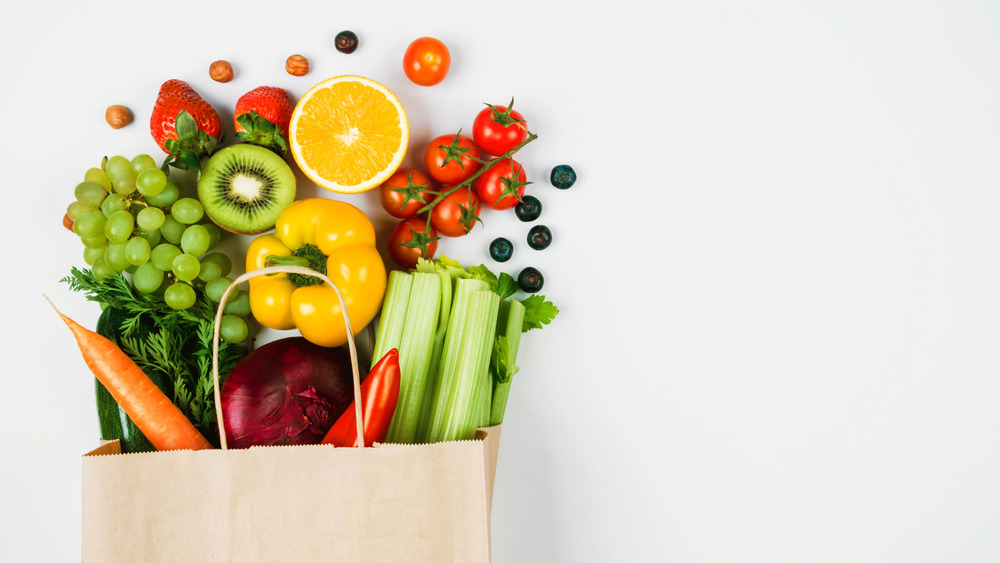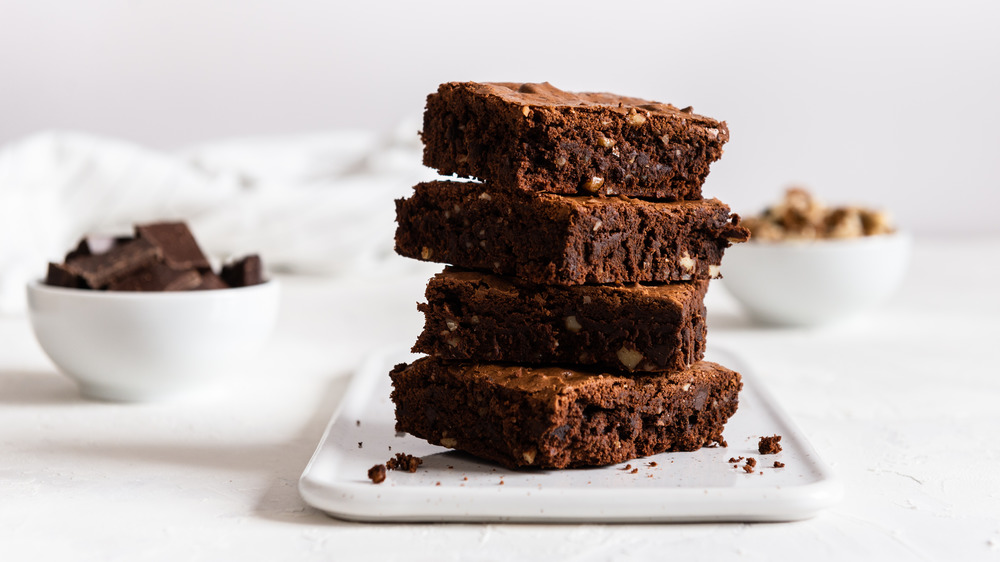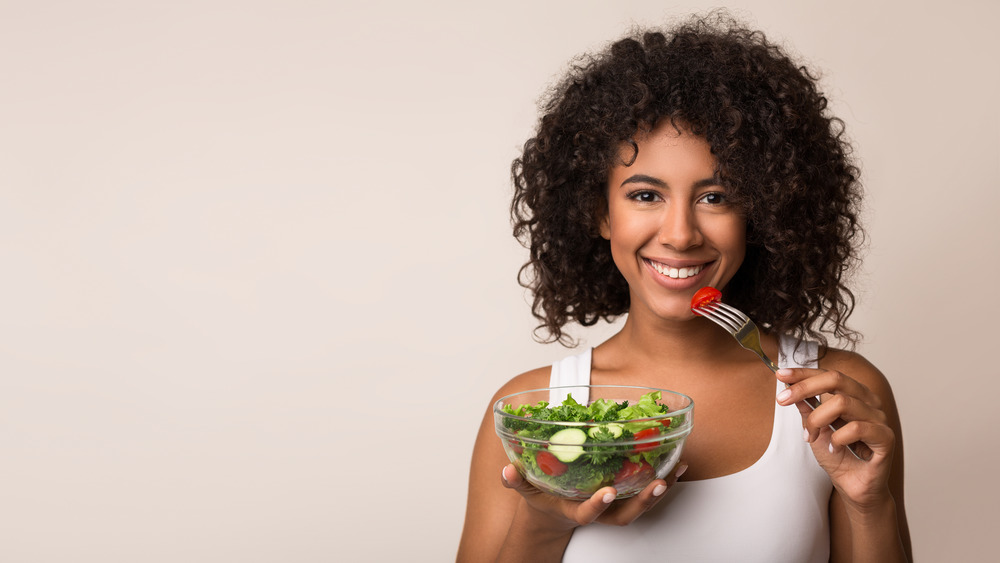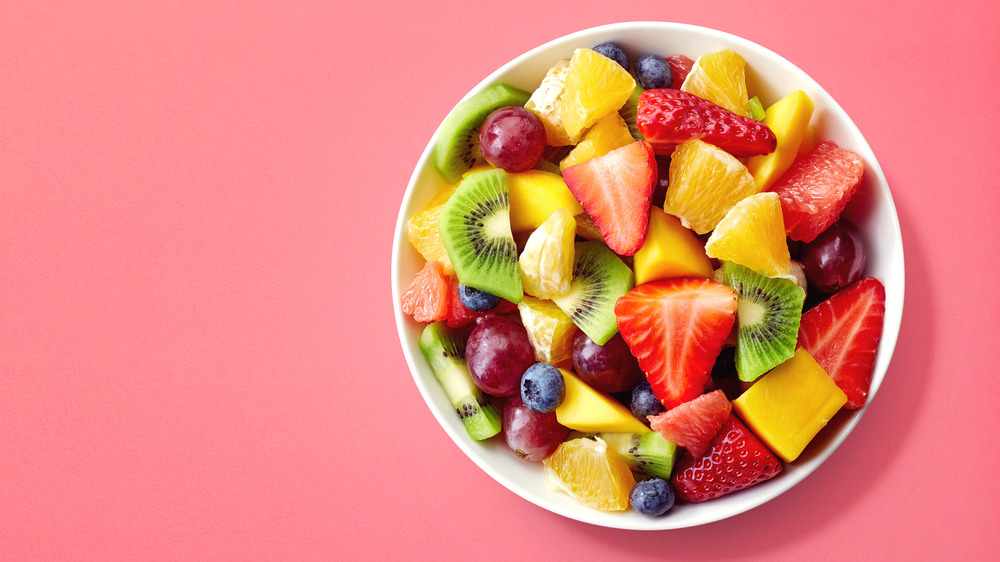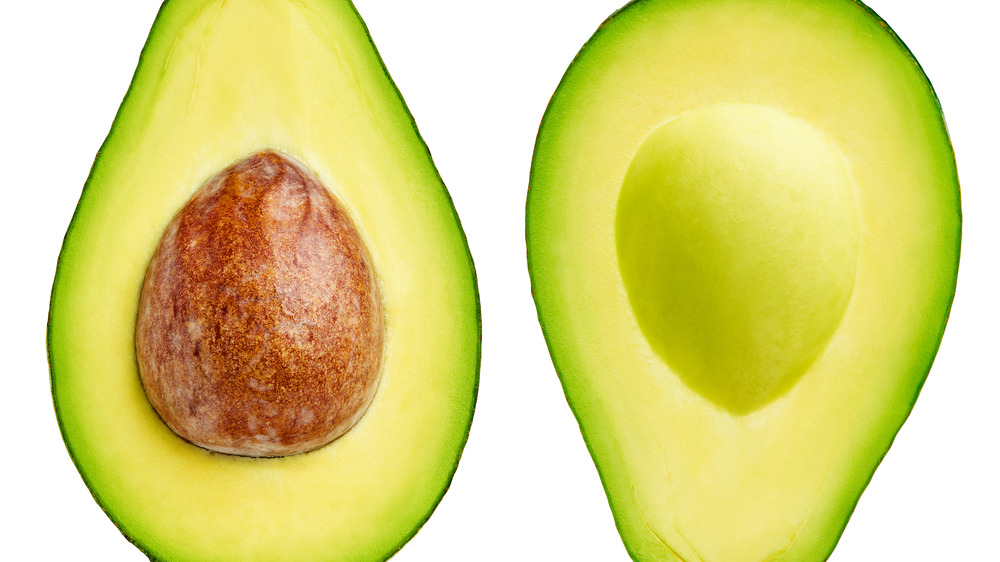The Truth About The Volumetrics Diet
We may receive a commission on purchases made from links.
Every year, the U.S. News and World Report assembles a team of health experts to review dozens of popular diets. The experts score each diet in several categories, like how easy the diet is to follow, how nutritious it is overall, and how effective it is for both short-term and long-term weight loss.
Invariably, the most flexible, easiest-to-follow diets end up topping the rankings. The Mediterranean diet, with its emphasis on nutritious foods and lack of strict rules, almost always comes out on top. Very strict diets like Whole30 are usually at the bottom of the list, along with rigid diets that rely on pre-made foods, like SlimFast or Nutrisystem.
Interestingly, some of the high-ranking diets are ones you may never have heard of. The Volumetrics diet, for example, was ranked the fifth-best diet by the U.S. News and World Report experts. The diet encourages foods that are high in nutrients and relatively low in calories but doesn't place any foods off-limits and doesn't assign a strict meal plan. It's easy to follow in real life and doesn't require you to buy any special foods, memberships, or equipment. Thinking of trying it? Here's what you need to know.
The Volumetrics diet was created by a nutrition professor and researcher
Frankly, many popular diets out there are based on pseudoscience and created by people with no nutrition credentials. This isn't the case with the Volumetrics diet. In 2000, Penn State nutrition professor and researcher Barbara Rolls published The Volumetrics Weight-Control Plan, in which she encouraged people to prioritize foods that were high in nutrients but relatively low in calories. In the book, she explained that it's not only the number of calories in a food that determine how satisfying it is, but also the amount of fat, protein, fiber, and water.
In 2012, Rolls published The Ultimate Volumetrics Diet, an updated version of her original book. In the book, she explains the science behind her recommendations and the research studies that she and others have conducted to back them up. She also includes recipes, tips, and a step-by-step program to help readers develop new habits.
In a world where diet books are often written by reality celebrities or untrained nutrition enthusiasts, it's refreshing to see a diet developed by a true expert. You can rest assured that the foundations of the Volumetrics diet are based on science.
The Volumetrics diet is based on energy density
The Volumetrics diet is named as such because it emphasizes foods that are high in volume (via Healthline). High-volume foods are ones that contain lots of water. These are said to have low energy density. Although the Volumetrics diet book gives lists of foods based on their energy density (also called calorie density), you can also figure this out on your own. The energy density of any food is the number of calories in a serving divided by the weight of that serving (in grams).
Here's an example of calorie density. According to the USDA, a medium Fuji apple (with skin) contains 121 calories and weighs 192 grams. So, its energy density is 121 calories/192 grams = 0.63 calories per gram. Another example? Per the USDA, a slice of frosted chocolate cake contains 537 calories and weighs 138 grams. So, its energy density is 537 calories/138 grams = 3.89 calories per gram.
As you can see, the Fuji apple has a far lower energy density than the frosted chocolate cake. In other words, one gram of chocolate cake has about six times as many calories as one gram of apple.
On the Volumetrics diet, you prioritize foods that are high in key nutrients but low in calories
The idea behind the Volumetrics diet is to eat mostly foods with low energy densities, so that you feel full on fewer calories. But, probably because the Volumetrics diet was developed by a nutrition expert, it also encourages you to choose foods with low energy density and high nutrient density.
When it comes to low energy density and high nutrient density, your best options are fruits, vegetables, and protein-and-vegetable-rich soups. These foods pack tons of vitamins, minerals, and water, but don't deliver loads of calories (via Healthline).
Because the Volumetrics diet encourages you to make fruits and vegetables the center of every meal and snack, it's likely that you'll get adequate amounts of many vitamins and minerals. The diet doesn't place any foods strictly off-limit. This means you're able to eat a wide variety of foods. If you want to, you can include small portions of foods that have high energy density and low nutrient density, like processed foods or desserts.
Foods are divided into four categories
Although you can calculate the energy density of any food by dividing the number of calories in a serving by the weight (in grams) of the serving, the Volumetrics diet book saves you some effort. It categorizes many common foods into four categories (via WebMD).
According to Healthline, category one is very low energy density foods (0.6 calories per gram or less) that are considered "free" or "anytime" foods. These include fruits, non-starchy vegetables, and broth-based soups. The second is low energy density foods (0.6-1.5 calories per gram) that you're encouraged to eat in reasonable portions. These include whole grains, lean proteins, beans, legumes, and low-fat dairy. Category three is medium energy density foods (1.6-3.9 calories per gram) that you can eat in small portions. These include bread, dessert, cheese, and high-fat meats. The fourth category includes high energy density foods (4.0 calories per gram or more) that you're told to eat sparingly. These include fried foods, candy, cookies, cake, nuts, oils, butter, and other fats.
Generally, you build meals around category one and category two foods, plus a small serving of category three foods. Category four foods are meant to be eaten in very small quantities.
Essentially, the Volumetrics diet works by reducing the number of calories you consume
Simply put, the Volumetrics diet is designed to make you feel full on fewer calories. By eating nutritious foods that are low in calories but high in water, your stomach literally fills up more quickly, and you tend to eat less.
In a 2017 review written by Barbara Rolls (the creator of the Volumetrics diet) and published in Nutrition Bulletin, Rolls reviews the evidence on low energy density diets. She points out that previous studies have found that eating a large amount of low energy density food (like a soup or salad) before the rest of the meal can significantly increase satisfaction and reduce the number of calories consumed at the meal. She also cites studies that have shown that people who eat more foods with low energy density tend to eat fewer calories overall.
This happens for a number of reasons, she says. Eating a low energy density diet impacts our digestive system, as well as our hormones, senses, and our brains. She concludes that adding more low energy density foods to your diet will have positive health effects and can help you maintain your weight.
On the Volumetrics diet, you'll eat three meals and a couple snacks every day
On the Volumetrics diet, there's no restriction on when you can and can't eat — it's not like intermittent fasting where you only eat within a certain time window, nor are there instructions to stop eating at a certain time of day. This is great for anyone who typically gets hungry after a few hours of not eating, who can't start the day without breakfast, or who enjoys after-dinner snacks.
The Volumetrics diet does recommend that you eat relatively frequently, consuming three meals and one or two snacks per day (via VeryWellFit). To keep track of your meals and snacks, the Volumetrics diet encourages you to keep a food journal documenting what, when, and how much you eat. It is also suggested that "planning ahead for social situations" in which you might not have as much control over what or when you're eating. For example, you might eat lots of very low energy density foods earlier in the day, in anticipation for higher energy density foods later on.
The Volumetrics diet promotes whole foods
No doubt about it, the Volumetrics diet promotes whole, nutritious foods. The diet encourages you to eat loads of fruits and vegetables, plus plenty of whole grains, lean proteins, beans, legumes, and low-fat dairy products (via Healthline). Not only do these foods help keep you full for relatively few calories; they also deliver the nutrients you need for optimal health.
The Volumetrics diet also discourages the consumption of heavily processed foods, which are energy-dense. The evidence strongly suggests that diets high in whole foods and low in very processed foods are great for health. In a 2020 review published in Nutrients, the authors looked at 43 previously conducted studies examining the impact of diets rich in ultra-processed foods (like packaged foods and desserts). They found that eating a diet high in these foods was associated with several poor health outcomes, including type 2 diabetes, heart disease, irritable bowel syndrome, and all-cause mortality. The fact that the Volumetrics diet encourages dieters to limit these foods and instead fill up on whole, nutrient-dense foods is a major plus when it comes to health.
The Volumetrics diet doesn't forbid any foods
While the Volumetrics diet encourages you to limit high energy density foods like cake, fried food, and chocolate, it doesn't outright forbid you from eating these things. This is consistent with the Dietary Guidelines for Americans, which recommends that only about fifteen percent of our daily calories should come from saturated fat, added sugar, and alcohol.
In fact, the Dietary Guidelines rely on many of the same principles that the Volumetrics diet is based around. They recommend making meals more nutrient-dense and less calorie-dense by replacing certain foods with others. For example, they recommend making a lower-calorie burrito bowl by using a mixture of brown rice and lettuce (instead of just white rice), black beans, grilled chicken (instead of stewed chicken), grilled vegetables, sliced avocado (instead of guacamole), fresh salsa (instead of jarred salsa and sour cream), reduced-fat cheese (instead of full-fat), and jalapeño. They also recommend choosing no-calorie beverages like water or unsweetened iced tea instead of soda or juice.
Like the Dietary Guidelines, the Volumetrics diet makes room for all foods. Instead of forbidding certain items, the goal is to eat less of them.
Some experts praise the Volumetrics approach for being a sustainable approach to eating
The Volumetrics diet relies on whole foods and doesn't require you to purchase any supplements or meal replacements. It also encourages you to eat a wide variety of foods. For these reasons, many experts say that it's a sustainable way to eat in the long term.
"Volumetrics is one of my favorite diets because it's more about eating than dieting," Andrea Giancoli, a dietitian and nutrition communications consultant, told Everyday Health. "People like to eat, and research has shown that when you eat high-water-content foods, such as a green salad with a lot of vegetables or soup, you eat less [calories]." In other words, by choosing foods with low energy density, you often end up eating fewer calories without actively trying to do so or feeling restricted.
Volumetrics diet creator Barbara Rolls echoes this sentiment, saying that the diet works because you don't have to cut out your favorite desserts or treats, or subsist only on low-calorie foods like vegetables and soups. Instead, you learn to eat all of these foods in a balance that's satisfying and nutritious.
There's evidence that the Volumetrics approach could support long-term weight loss
Because the Volumetrics diet emphasizes low-calorie foods and limits high-calorie foods, it can lead you to eat fewer calories than you may have consumed otherwise. There's also evidence that following the Volumetrics diet might lead to weight loss.
In a 2012 preliminary investigation published in Eating Behaviors, researchers surveyed 287 adults and asked them to recall what they had eaten in the previous 24 hours. They did this three times with each participant to get an idea of how each participant eats on an average day. Some of the adults had previously been on diets and were maintaining weight loss, while others had not. Researchers found that the adults who were successfully maintaining weight loss ate foods that had, on average, significantly less energy density. While more research needs to be done, these results suggest that the Volumetrics diet and similar low energy density eating plans are useful in maintaining weight loss long term.
In addition, a 2016 review published in Nutrients analyzed data from thirteen previous studies and found that eating low energy density foods was associated with successful weight loss maintenance.
However, there's evidence that weight loss is difficult to sustain long-term, no matter the approach
While eating low energy density foods, as in the Volumetrics diet, has been associated with long-term weight loss in some studies, many other studies have found that long-term weight loss is extremely difficult and rare.
A 2020 review study published in The BMJ analyzed data from 121 previously conducted clinical trials, each one testing various diets. The researchers looked at data from low-carb, low-fat, low-calorie, and moderate macronutrient (AKA a balanced mix of protein, carbs, and fat) diets. Although certain diets proved to promote more weight loss in study subjects in the short-term, the review authors found that essentially no diet, no matter its macronutrient breakdown, created a significant amount of weight loss after one year.
What's the takeaway here? Essentially, maintaining any significant amount of weight loss is difficult in the long term, no matter what foods you're eating. The Volumetrics diet, which is a type of low-fat diet since it encourages you to limit high-fat foods, isn't magic. While it may work for some people, there's no guarantee that it will lead to long-term weight loss.
The Volumetrics diet encourages cooking and meal planning, which can improve health
In The Ultimate Volumetrics Diet, there are lots of recipes for nutritious, satisfying meals that don't call for any out-of-the-ordinary ingredients. The book also encourages anyone trying the Volumetrics diet to plan meals in advance.
This is good news for anyone trying to eat a more nutritious diet for life. In a 2017 cross-sectional study published in the International Journal of Behavioral Nutrition and Physical Activity, researchers looked at survey data from an ongoing study on the food and health habits of French adults. They analyzed data from over 40,000 adults and found that those who regularly planned and cooked their own meals ate more nutritious diets overall than those who didn't.
This is one of the most important things to keep in mind before trying any diet. Diets or eating plans that teach you to cook and plan nutritious meals will likely create healthy habits that you can stick to for life. On the other hand, diets that are extremely restrictive or that require you to buy pre-made meals probably won't teach you sustainable habits — when you go off the diet, any benefit will be lost.
The Volumetrics diet recommends limiting healthy fats, which some experts take issue with
Many of the nutrition principles behind the Volumetrics diet are sound: Eat lots of fruits and vegetables; include whole grains, beans, legumes, and low-fat dairy regularly; limit fried foods and sugary treats.
However, there's one central principle in the Volumetrics diet that experts take issue with: Limit foods high in healthy fats, like avocados and nuts. Although the Dietary Guidelines recommend limiting saturated fats (found primarily in meat and dairy products), they don't recommend limiting healthy fats, which have been shown to have several health benefits.
For example, the Volumetrics diet puts nuts and seeds in "category four," which includes the foods that you're meant to eat sparingly, if at all. "Nuts and seeds provide monounsaturated fats and omega-3 fatty acids, both beneficial for cardiovascular and cognitive health," nutrition researcher Lisa Davis told Women's Health. Following the Volumetrics diet's recommendation to limit or eliminate nuts and other foods high in unsaturated fats could cause you to miss out on these benefits. Plus, fat makes food taste good and helps keep you satisfied, so it's an important addition to meals.
The Volumetrics diet can be affordable and sustainable
According to the health and nutrition experts who reviewed the Volumetrics diet for U.S. News and World Report, the Volumetrics diet can be both affordable and easy to stick to if done right.
For starters, The Ultimate Volumetrics Diet includes many recipes that call for simple ingredients — fruit, vegetables, whole grains, lean proteins, beans, legumes, and low-fat dairy products that you can find at pretty much any grocery store. You don't have to stick to these recipes, but they provide an introduction to what the Volumetrics approach is like in practice. Once you're comfortable with the principles of the Volumetrics diet, you can create recipes that incorporate your all favorite ingredients. Because there's so much flexibility built into the Volumetrics diet, it's easier than many other diets to stick to long term.
The Volumetrics diet is also extremely affordable for most people. There are no branded food products that you need to buy regularly, and you can choose to buy whichever low energy density foods you like. Many of these are affordable, and it's likely you already cook with most of them.

